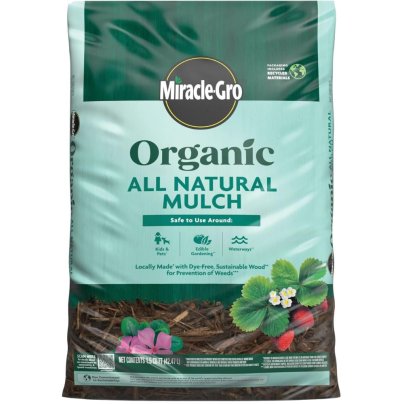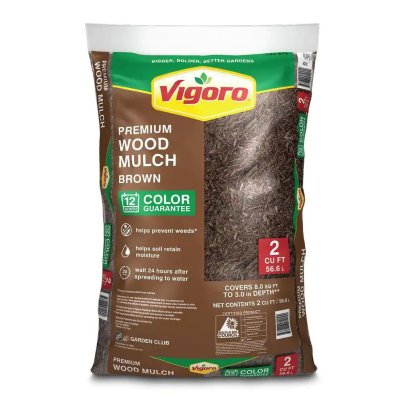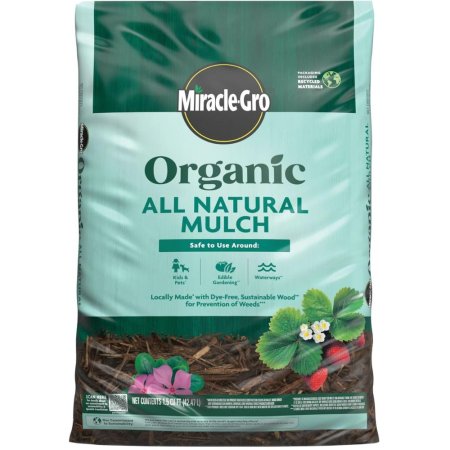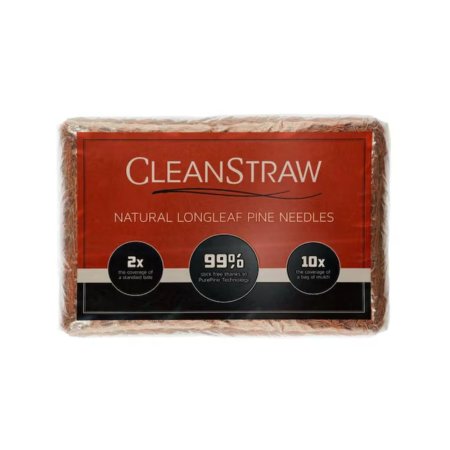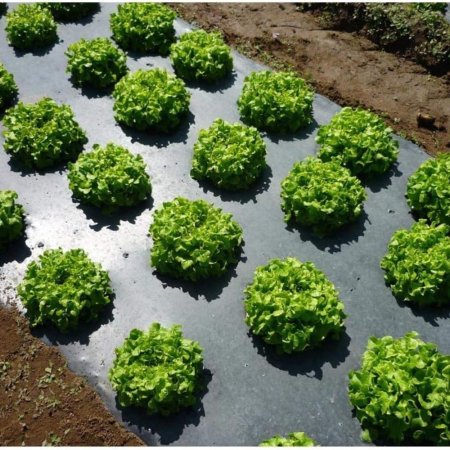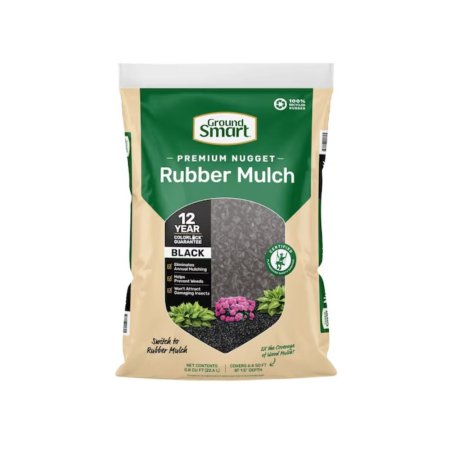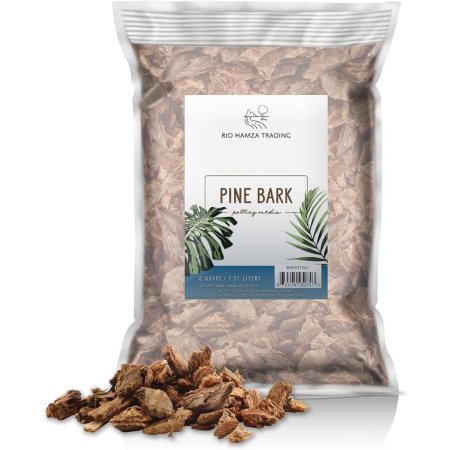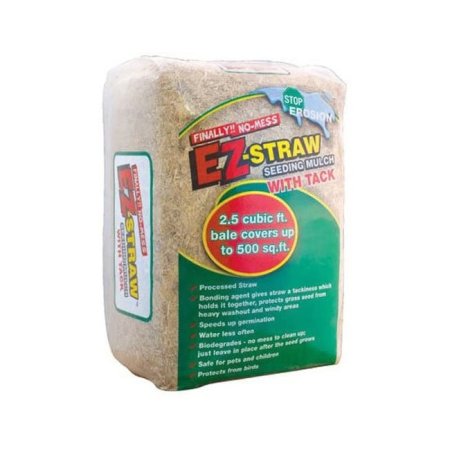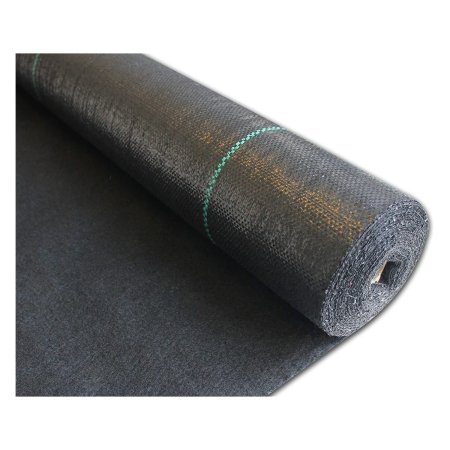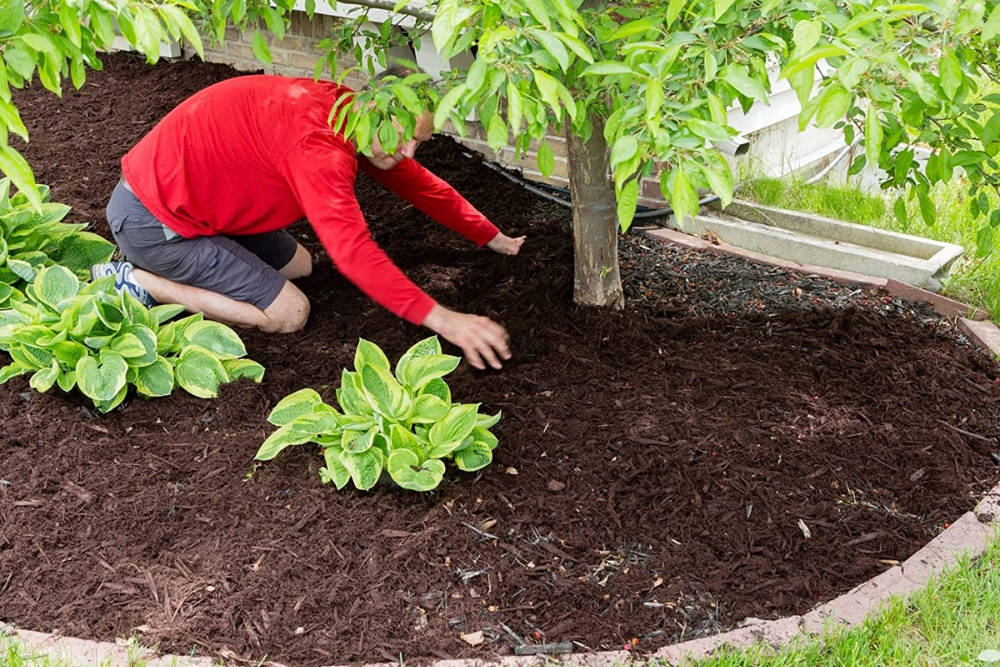
We may earn revenue from the products available on this page and participate in affiliate programs. Learn More ›
If you haven’t been using mulch in your garden, you’re seriously missing out on the benefits of this horticultural secret weapon. The best mulch for landscaping beds can help conserve water, keep weeds down, and protect tender plants from unexpectedly chilly temperatures. The right mulch can also turn a drab landscaping bed into an eye-catching garden spot. However, there’s much more to mulch than simply dumping it into the garden. To get the best results, you need to pick a good-quality product and apply it correctly.
Our top choice is the Miracle-Gro Organic All Natural Mulch. We love it for its attractive appearance, ability to retain moisture, consistent quality, and natural ingredients. After researching several dozen alternatives, we found a number of other options that suit different locations and needs. Below, you’ll find our recommendations for the best mulch for landscaping beds, along with tips on choosing mulch for your garden.
- BEST OVERALL: Miracle-Gro Organic All Natural Mulch
↓ Jump to Review - RUNNER-UP: VigoroBagged Premium Brown Wood Mulch
↓ Jump to Review - BEST BANG FOR THE BUCK: CleanStraw Long Leaf Bagged Pine Straw
↓ Jump to Review - BEST FOR VEGETABLE GARDENS: Grower’s Solution Black Plastic Mulch
↓ Jump to Review - BEST FOR DECORATING: GroundSmart Premium Nugget Black Rubber Mulch
↓ Jump to Review - BEST FOR CONTAINERS: Rio Hamza’s Natural Pine Bark Mulch
↓ Jump to Review - BEST FOR GRASS SEED: EZ-Straw Seeding Mulch With Tack
↓ Jump to Review - BEST FOR FLOWER BEDS: EcoGardener Pro Garden Weed Barrier Landscape Fabric
↓ Jump to Review
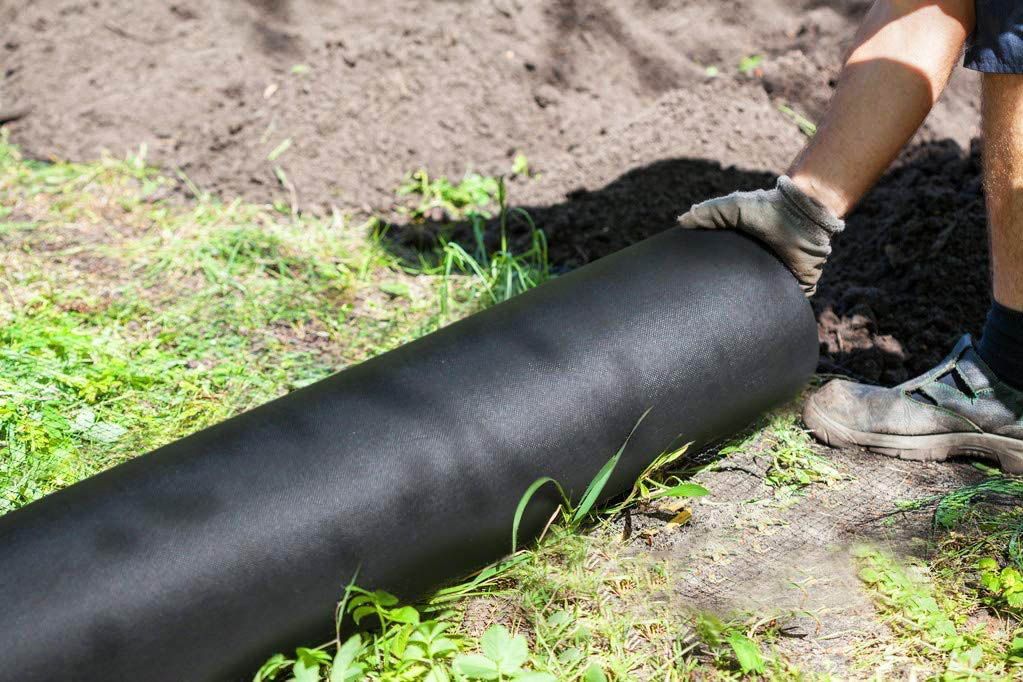
| Material | Quantity | Coverage area | |
| Miracle-Gro Organic All Natural Mulch | Shredded wood | 1.5 cu. ft. | 6 sq. ft. at a 3-inch depth |
| VigoroBagged Premium Brown Wood Mulch | Shredded wood | 2 cu. ft. | 8 sq. ft. at a 3-inch depth |
| CleanStraw Long Leaf Bagged Pine Straw | Long leaf pine needles | 1 bale | 80 sq. ft. at 3- to 4-inch depth |
| Grower’s Solution Black Plastic Mulch | 1.0 mil black plastic | 110 feet long by 4 feet wide | 400 sq. ft. |
| GroundSmart Premium Nugget Black Rubber Mulch | Recycled rubber | 0.8 cu. ft. | 6.4 sq. ft. at 1.5-inch depth |
| Rio Hamza’s Natural Pine Bark Mulch | Pine bark | 8 quarts | Not listed |
| EZ-Straw Seeding Mulch With Tack | Wheat straw | 2.5 cu. ft. | 600 sq. ft. |
| EcoGardener Pro Garden Weed Barrier Landscape Fabric | Polypropylene | From 50 feet long by 3 feet wide (multiple sizes available) | 150 sq. ft. |
Our Top Picks
Choosing the best landscaping mulch is easier if you consider type, texture, nutrients, and especially intended application. The recommendations―all from reputable companies―should suit various needs.
Miracle-Gro Organic All Natural Mulch
What We Like
- Sourced and manufactured regionally
- Retains soil moisture
- Made from all-natural, organic materials
What We Don’t Like
- Often more expensive than inorganic mulches
Product Specs
- Material: Shredded wood
- Quantity: 1.5 cu. ft
- Coverage area: 6 sq. ft. at a 3-inch depth
Miracle-Gro Organic All-Natural Mulch is the top choice for landscape mulching. It is 100 percent organic and offers dual functionality: It beautifies garden beds with its rich, dark appearance and fosters healthier soil. The mulch also retains moisture, suppresses weeds, and prevents soil erosion.
Gardeners appreciate that it breaks down over time, enriching the soil with organic material without added chemicals. This makes it an excellent choice for both ornamental and edible garden areas. Its consistent quality and natural ingredients ensure that it aligns with sustainable gardening practices, promoting plant health and vigor. Moreover, the mulch is sourced and manufactured regionally, typically within 150 miles of the stores. The 1.5 cu. ft. coverage is efficient for small and large areas, making it a versatile option for any gardening enthusiast looking to enhance their landscape while supporting the ecosystem.
Runner-up
Vigoro Bagged Premium Brown Wood Mulch
What We Like
- Boosts landscape aesthetic appeal with a rich brown color
- Reduces the need for frequent watering by retaining soil moisture
- Lessens garden maintenance by suppressing weed growth
- Available in red or black colors
What We Don’t Like
- May require refreshment as color fades over time
Product Specs
- Material: Shredded wood
- Quantity: 2 cubic feet (cu. ft.)
- Coverage area: 8 sq. ft. at a 3-inch depth
Vigoro’s Premium brown wood mulch offers a high-quality, visually appealing option for gardeners who want to improve their landscapes’ look while promoting soil health. This mulch maintains its rich, brown color over time, creating a striking contrast that showcases garden plants and pathways. It also helps retain soil moisture, reducing the need for frequent watering, and prevents weed growth, saving users time and effort in garden maintenance.
The mulch’s consistency and texture make it easy to apply and ensure a tidy appearance. Overall, Vigoro’s brown wood mulch is an excellent choice for residential and commercial landscapes, combining functionality with environmental benefits. The mulch is also available in red or black.
Get the Vigoro mulch at The Home Depot.
Best Bang For The Buck
CleanStraw Long Leaf Bagged Pine Straw
What We Like
- Easier to handle and spread
- Long lasting and high-quality
- Cost-effective
What We Don’t Like
- Potentially unavailable in some parts of the country
Product Specs
- Material: Long leaf pine needles
- Quantity: 1 bale
- Coverage area: 80 sq. ft. at 3- to 4-inch depth
CleanStraw bagged pine straw is an excellent budget-friendly option for effective and aesthetically pleasing landscape mulch. Its premium longleaf pine needles add a neat, natural look to garden beds and excel in moisture retention, soil insulation, and erosion prevention. This product decomposes slowly, enriching the soil with organic matter over time, offering an excellent balance of performance and price.
The pine bale covers up to 80 square feet at a depth of 3 to 4 inches, making it the most cost-friendly pick on this list. The one downside is that pine straw mulch may only be available in some areas of the country.
Get the CleanStraw mulch at Lowe’s or Ace Hardware.
Best For Vegetable Gardens
Grower's Solution Black Plastic Mulch
What We Like
- Suppresses weed growth effectively
- Helps accelerate seed germination and early plant growth
- Retains soil moisture, decreasing the frequency of watering
What We Don’t Like
- Lacks sustainability being a single-use plastic
Product Specs
- Material: 1.0 mil black plastic
- Quantity: 110 feet long by 4 feet wide
- Coverage area: 400 sq. ft.
Grower’s Solution black plastic mulch is an excellent choice for vegetable gardeners looking to enhance growth while minimizing maintenance. This 1.0 mil embossed black plastic mulch efficiently warms the soil, accelerating seed germination and early growth by capturing solar heat. Its durability is highlighted in its ability to suppress weeds effectively, reducing the need for chemical herbicides and labor-intensive weeding. Additionally, it helps conserve soil moisture, ensuring that water remains available to the plants even during drier periods.
Using this plastic mulch in vegetable gardens can lead to healthier, more vigorous plants and helps keep produce clean by preventing soil from splashing onto the plants during rainstorms.
Best For Decorating
GroundSmart Premium Nugget Black Rubber Mulch
What We Like
- Maintains its rich black color over time without fading
- Offers an eco-friendly landscaping option
- Longest-lasting material does not require frequent reapplication
- Safe for use on playgrounds and around pets and children
What We Don’t Like
- Emits a noticeable odor in hot weather conditions
- Carries a premium price tag
Product Specs
- Material: Recycled rubber
- Quantity: 0.8 cu. ft.
- Coverage area: 6.4 sq. ft. at 1.5-inch depth
GroundSmart Premium Nugget black rubber mulch is an excellent choice for a durable, eco-friendly mulching solution. This 0.8 cu. ft. bag of rubber nuggets is made from recycled materials, providing a great alternative to traditional wood mulch. Its rich black color remains vibrant in all weather conditions, enhancing the aesthetic appeal of landscapes without fading.
In addition, the rubber material offers superior weed control, effectively retains soil moisture, and is safe for children and pets. The nuggets’ texture is soft and resilient. As we discovered in our rubber vs. wood mulch article, it is best as a top dressing over high-quality soil, making it ideal for playgrounds and landscape beds. For gardeners and landscapers seeking a long-lasting, maintenance-free option, GroundSmart’s rubber mulch is practical and visually appealing.
Get the GroundSmart mulch at Lowe’s, Walmart, or Menards.
Rio Hamza’s Natural Pine Bark Mulch
What We Like
- All-natural mulch that contains no fertilizers or pesticides
- Attractive light brown color can be used for decorative appeal
- Serves as a top dressing or soil additive to improve drainage and suppress weeds
What We Don’t Like
- Prone to tumbling; may require frequent topdressing
Product Specs
- Material: Pine bark
- Quantity: 8 quarts
- Coverage area: Not listed
Rio Hamza’s Natural Pine Bark Mulch is an excellent option for container gardening because it significantly benefits soil health and plant growth. This 100% natural pine bark product is finely processed into small nuggets, making it perfect for indoor and outdoor container use.
Its structure promotes excellent moisture retention, which is crucial for the limited soil volume in pots, ensuring that plants stay hydrated and healthy. Additionally, pine bark mulch helps regulate soil temperature and suppresses weed growth, simplifying container gardening. Moreover, its aesthetic appeal enhances the visual appeal of plant arrangements, making it a dual-purpose choice for functionality and decoration.
Get the Rio Hamza’s mulch at Amazon.
Best For Grass Seed
EZ-Straw Seeding Mulch With Tack
What We Like
- Forms a protective barrier without hindering seed germination or plant growth
- Binds straw together with a natural, food-based tackifier to prevent dispersal
- Provides excellent coverage, safe for kids and pets, and biodegradable
What We Don’t Like
- Lacks visual appeal and may emit an odor when wet
Product Specs
- Material: Wheat straw
- Quantity: 2.5 cu. ft.
- Coverage area: 600 sq. ft.
Straw mulch like this EZ Straw seeding mulch is easy to apply, and while it’s not the most beautiful mulch option out there, straw mulch can work wonders. Adding straw to a landscaping area helps protect grass seeds from the elements and hungry critters so they can take root. It’s also biodegradable and safe for use around kids and pets. A thick layer of straw mulch is a good alternative for edible gardens to protect newly planted seeds or tender seedlings and help retain water. Each 2.5 cu. ft. bale covers up to 600 square feet, depending on depth. Also available from some retailers as singles.
Get the EZ-Straw mulch at Amazon (2-pack) or The Home Depot (single).
Best For Flower Beds
EcoGardener Pro Garden Weed Barrier Landscape Fabric
What We Like
- A tough, long-lasting weed barrier
- Easy to cut and lay
- Can be topped with bark or pebbles for greater visual appeal
What We Don’t Like
- Really only best for permanent beds
Product Specs
- Material: Polypropylene
- Quantity: From 50 feet long by 3 feet wide (multiple sizes available)
- Coverage area: 150 sq. ft.
Add the heavy-duty EcoGardener Pro Garden Weed Barrier landscape fabric to your new flower beds to prevent weed growth. Just cut and install. The material also helps conserve moisture. Note that landscape fabric is best for use in a perennial flower bed. Use a different type of mulch for plots that contain mostly annuals. Since you’ll want to cut holes to accommodate the flowers, this mulch isn’t ideal if you are replanting year after year. Landscape fabric works best when topped with mulch to enhance its visual appeal.
Get the EcoGardener mulch at Amazon.
Jump to Our Top Picks
How We Chose the Best Mulch
The best mulch is durable, long lasting, and able to keep weeds and invasive insects away. It also helps to prevent soil erosion. We looked at the wide range of mulch types available and provided our top picks for the most popular types, including straw, wood chips, and rubber, as well as the best landscape fabrics, in order to cover a broad spectrum of intended applications.
Our research found that certain shoppers prefer organic material to help add nutrients to the soil as they slowly break down over time, but we are aware that longevity is also a major consideration for other shoppers, who prefer inorganic options that will stand the test of time. Our list of recommendations spans these two preferences to provide several options for each category. We also considered price, and our articles covering mulch cost and how much mulch you may need both provide invaluable information.
Bob Mann, senior director at the National Association of Landscape Professionals, warns against applying too thick a layer of mulch. “Piling much against the trunks of trees or shrubs leads to fungal rot,” he says. “Keeping mulch from directly contacting the trunks of trees and shrubs and only allowing approximately 3 inches of mulch in total is best.”
He also makes an important point about fire safety: “Organic mulches are flammable, and mulch fires are not uncommon. If the mulch fire is close enough to the siding of a building, the risk of fire extending is greatly increased.” He says that keeping an organic mulch-free area 12 to 18 inches from the building foundation will reduce this risk. “In place of organic mulch against a building foundation, choose an inorganic mulch such as landscape stones or similar.” Synthetic landscape fabric could also be used.
What to Consider When Choosing a Mulch
There are a few essentials to consider before choosing, buying, and bringing home bags of mulch. Here’s what you need to work out before shopping.
Type
First, decide on the type of mulch you want to use. There are many mulches, but to make things easier, we’ll divide mulch into two big buckets: organic and inorganic mulch. Organic mulches are impermanent materials that will break down over time. In addition to providing all the incredible benefits of mulch, they help condition the soil by improving its texture and adding nutrients.
Inorganic or synthetic mulches are materials that don’t break down. Rocks are sometimes labeled as an organic mulch, but they don’t actually break down, so that’s a bit of a misnomer. Inorganic mulches often are easy-to-use fabrics and can be an excellent option for keeping weeds at bay in a large garden or landscaping space.
Here’s a breakdown of some common organic mulch options:
- Straw
- Bark or wood chips
- Pine needles
- Crumbled or shredded leaves
- Grass clippings
- Sawdust
- Coco coir
Here are a few inorganic mulches you might come across:
- Rubber mulch
- Red or black plastic mulch
- Rocks and stones
- Landscape fabric
An advantage of organic mulch is that many organic mulch materials are free. Grass clippings, for instance, are in ready supply if you have a lawn you mow regularly. Similarly, if you have leaf-shedding trees on your property, there’s another source of free mulch.
On the other hand, inorganic mulch options are longer lasting and often visually appealing. Your choice might depend on the use, such as gravel and crusher fine for paths, and organic mulches in garden beds.
Intended Application
How do you intend to use mulch in your garden? If you need to cover a large space, plastic or fabric mulch is an inexpensive, easy-to-apply option. Covering a large garden space with straw or wood chips can get pricey pretty quickly. It’s also a lot more labor-intensive to apply.
If you’re working with a large garden area, you also probably want to avoid stones or pebbles unless you’re absolutely sure of your final landscaping vision. Rock mulch can be tough to remove once the rocks are down, so you want to be 100 percent sure you want them there.
Additionally, keep your aesthetic vision in mind. Consider how you want the area to look, whether you are applying mulch for practical reasons or to create a cohesive landscape that blends colors and textures. Dyed (or even natural) wood or rubber mulch is a great option for improving the look of a garden landscape. If you’re using mulch to help conserve moisture in a vegetable garden bed, straw or coco coir are natural and organic choices. They’re not the prettiest mulch options, but they definitely do the job.
Timing
The best time to mulch is before you plant anything inside your garden beds or right after, depending on the type of mulch you’re using. If you’re using landscaping fabric, you’ll need to apply that before anything else as a base layer for your bed. If you plan to use wood chips, you can place those before or after planting.
Add mulch at any time during the season, though. You might also need to touch up places here and there if you’re using organic mulch. You can use mulch to protect tender plant roots and tree saplings from unexpected freezes and thaws in fluctuating temperatures, applying the mulch at planting time (to also conserve water around the new plant’s roots) or before nighttime temperatures plummet.
Texture
Mulch texture differs depending on the type of mulch you choose. Texture has everything to do with how you want your landscaping beds to look. It can also affect how easy it is to walk on an area and how well water and air reach through the mulch layer to support healthy plants.
Nutrients
Though inorganic mulch won’t affect soil nutrients, some organic mulches will improve the nutrient content of your soil. That said, the impact is minimal, so you should still count on using fertilizer once in a while. Compost is the best mulch for improving soil nutrients, but it’s not the most attractive, cohesive option for landscaping beds. However, applying an organic mulch above compost worked into the soil can feed the soil over time.
Weed Prevention
Weeds are some of the most annoying foes a gardener has to deal with. In a large landscaping bed, a bunch of weeds can quickly overrun your healthy, beautiful plants and ruin your tidy-looking garden. Mulch can help you tackle weed problems. Some mulches are better suited to keeping down weeds, though.
Landscaping fabric and plastic mulch, for instance, literally suffocate any weeds hanging around. That said, they also can suffocate the plants in the bed, and you should use caution when applying fabric in growing areas, cutting a large hole around the plant’s roots.
Organic mulches like wood chips and straw will have a similar but less intense weed-killing effect. Be careful when adding organic mulches to prevent weed growth. Don’t pile mulch too close to your plants, and adding too much can suffocate your plant roots and eventually kill them. Too much mulch isn’t necessarily a good thing, but a layer of a few inches controls weeds better than a thin layer.
Longevity
Need a durable mulch option? Most organic mulches won’t last more than a few years since they eventually decompose. The longest-lasting mulch is stone, but keep in mind some of its drawbacks. Other long-lasting options are landscape fabric (great for starting weed-free beds), plastic mulch (great for moisture and heat retention for heat-loving plants), and rubber.
The Advantages of Using Mulch
Why use mulch? There are many advantages to using this material in your garden and landscaping beds. Here’s why you should consider adding mulch to your gardening tool kit:
- Conserve water. Water loss is inevitable in a garden, especially at the peak of the hot weather with the sun beating down on your beds. Adding mulch can help conserve moisture and prevent water loss that occurs due to evaporation. You won’t have to deal with rapidly drying soil as much if you use mulch, and you can save some water.
- Regulate temperature. It can be hard to manage soil temperatures throughout the season, especially as the weather fluctuates. Adding mulch around the root zones of your plants can help regulate soil temperature. In the hot weather, mulch cools the soil, and in the cooler months, mulch keeps plant roots warm.
- Add nutrients and improve soil. Adding organic mulches can help improve the nutrient content of soil over time. Organic mulch breaks down slowly and improves the condition and texture of soil.
- Prevent disease. A lot of beneficial organisms live in the soil, but so do a bunch of nasty ones. Many fungal diseases find their way onto and into plants because of splashing water. Mulch acts as a barrier between plant foliage and contaminated soil.
- Beautify your garden. Mulch also helps tie landscaping spaces together. Wood chips, rubber mulch, and rocks or gravel are most often used for aesthetic purposes. They are available in several colors, from natural to red.
FAQs
Do you still have questions about landscaping mulch? Here are some answers to frequently asked mulch questions.
No, not all mulch is organic. Some mulches are made of inorganic materials. These synthetic mulches have their place in gardening and agriculture, though, and have many benefits. They’re easy to apply, effective, and sometimes cost less per square foot than some organic mulches, like wood chips.
There are two main types of mulch, organic and inorganic. Here’s a full list of all the kinds of mulch you can use in your garden:
Compost
Straw
Hay
Coco coir
Shredded newspaper
Cardboard
Shredded leaves
Pine needles
Stones, pebbles, rocks
Sawdust
Crushed seashells
Grass clippings
Wood chips
Tree bark
Landscaping fabric
Black plastic mulch
Rubber mulch (sometimes called rubberwood chips)
Inorganic mulches are the longest lasting, which makes them good for permanent garden plants, beds, or paths. Rubber and landscaping fabric won’t break down like other types of mulch. Landscaping fabric eventually needs replacing, though, but not for years.
The longest lasting of them all? Stones, rocks, and pebbles by far. Just know that rocks have disadvantages. They’re heavy, cumbersome, and difficult to remove if you decide to change your garden around.
Mulching grass can help improve the nutrient availability for your lawn and help it grow healthier. Hold on, though. Grass mulching doesn’t involve just any type of mulch. It specifically requires finely chopped-up grass clippings or an organic compost. In addition to adding nutrients, mulching your lawn can help with moisture retention, which, in turn, can help you reduce your water use and save money on your water bill.
You don’t need to, but it’s a good idea. You’ll get better results if you weed before applying mulch. Weeds are considered garden intruders for a reason. They’re hard to get rid of. While you might get lucky, pulling them up helps keep them from popping up again in the future. When pulling weeds, you have to get them by the taproot. Simply cutting them at the soil line won’t permanently kill them.
According to lawn-care company Reddi Lawn Care, you should reapply mulch every five or six years. You might need to replace mulch sooner or add some depth for various reasons, such as if an area has heavy foot traffic.
It is possible to make your own garden mulch using things like composting material, old newspapers torn up into small pieces, and leaf litter. We looked at tools to help with this in our best leaf mulchers article. We also looked at mulching lawn mowers, but landscaping expert Mann advises that grass mulch is best left to benefit the lawn.
